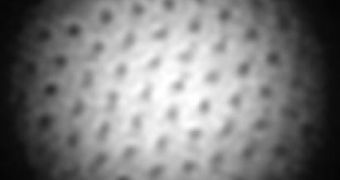A group of researchers have recently announced the creation of a completely new state of matter that combines the characteristics of lasers with those of the world's best electrical conductors.
They successfully demonstrated the existence of the phase, besides the previously known ones: solids, liquids, gases, plasmas, superfluids, supersolids, Bose-Einstein condensates, fermionic condensates, liquid crystals, strange matter and quark-gluon plasmas.
David Snoke, an associate professor in the physics and astronomy department in the University of Pittsburgh's School of Arts and Sciences explained that the new state is a solid filled with a collection of energy particles known as polaritons that have been trapped and slowed.
The new material could provide new ways of moving energy from one point to another as well as a low-energy means of producing a light beam like that from a laser, thanks to its joint properties.
The Pitts researchers have been working on a project to create materials which mix the characteristics of superconductors and lasers and have successfully captured the polaritons in the form of a superfluid, using optical nanostructures, thus resulting a form of matter called a polariton superfluid, in which the wave behavior produces a pure light beam similar to that from a laser but is much more energy efficient.
Unlike existent superconductors and superfluids, which need a constant temperature between -280 F and -450 F (-173 C to -268 C), the new polariton superfluid demonstrates an increased stability at higher temperatures, and could even, with future improvements, exist at room temperatures.
To create this new state of matter, the scientists used a technique similar to that used for superfluids made of atoms in the gaseous state known as the Bose-Einstein condensate.
High-temperature superconductivity is not fully understood, but the new material opens up opportunities to study the microscopic mechanisms behind this phenomenon.
Future practical applications could be revolutionary, allowing the creation of new ways of trapping and manipulating the energy particles, and of achieving a controlled transfer of optical signals through solid matter.

 14 DAY TRIAL //
14 DAY TRIAL //